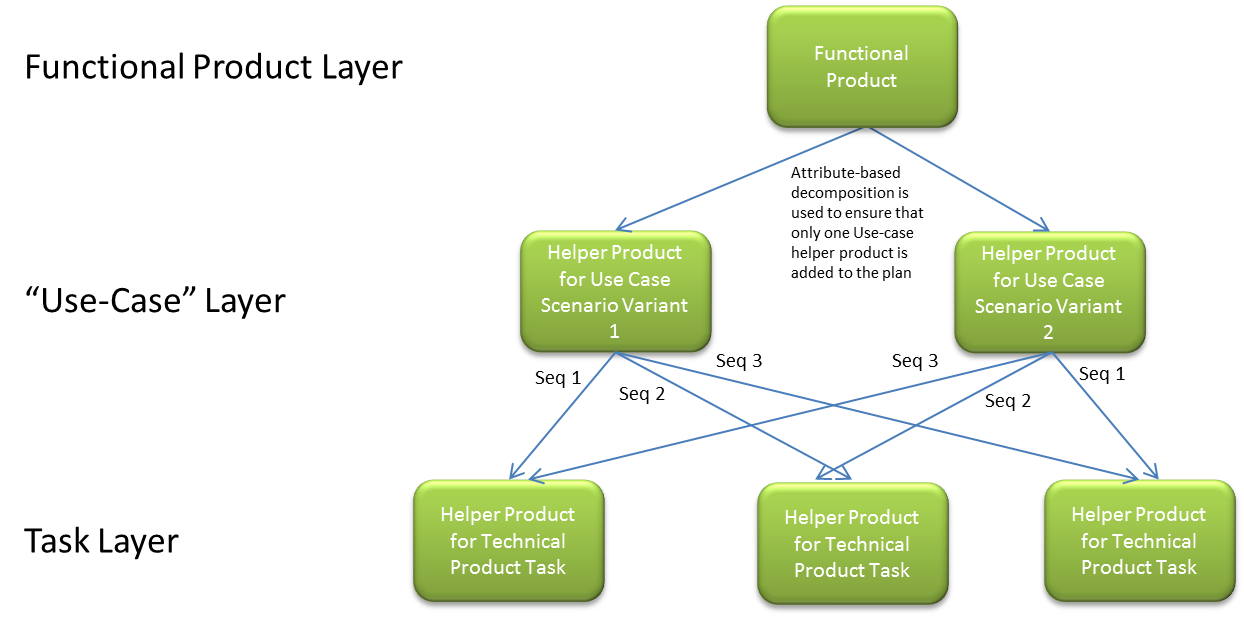Use Case Layer Pattern
In the current TIBCO Order Management - Low Latency product, you can define only one sequence of activities for a given action. However, you can now use a new layer of helper products in the hierarchy to provide the same flexibility for combining tasks for different actions in the same use case.
Pattern Rationale
Some use case scenarios require different sequencing for different variants of the same action, for example, an update activity. However, in the current TIBCO Order Management - Low Latency product, you can define only one sequence of activities for a given action.
Pattern Realization
The solution is to use a new layer of helper products in the hierarchy, representing the use case scenario. For a given order, attribute-based decomposition is used to ensure that only one use case helper product is included in the execution plan, making them mutually exclusive.
A layer of tasks is implemented below the layer representing the point of reuse. With the use case layer, the same tasks can be combined in different sequences for the same action. There is no explicit modeling of the technical product, only the tasks that operate on that product.
This pattern is an extension of the helper product layer pattern described previously and provides the same flexibility for combining tasks for different actions in the same use case.

